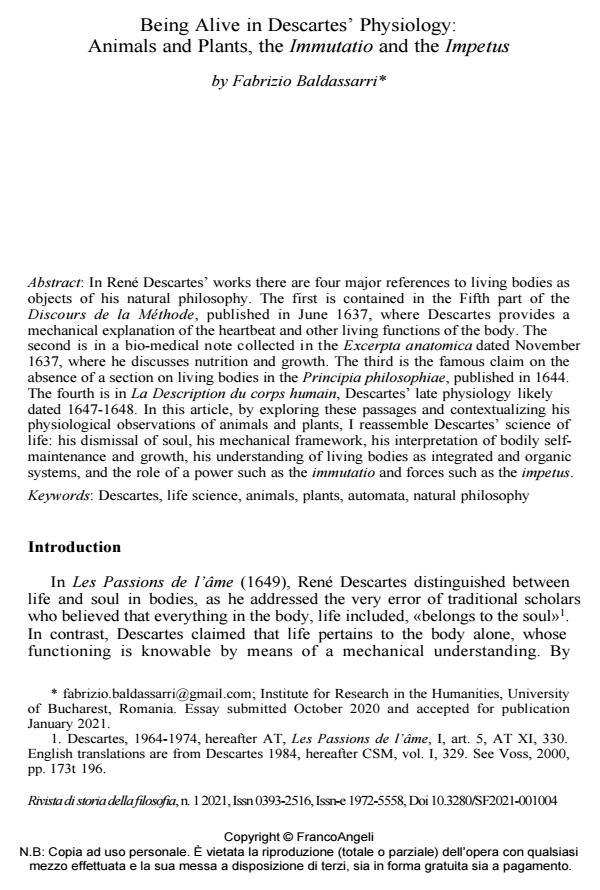Being Alive in Descartes’ Physiology: Animals and Plants, the Immutatio and the Impetus
Journal title RIVISTA DI STORIA DELLA FILOSOFIA
Author/s Fabrizio Baldassarri
Publishing Year 2021 Issue 2021/1
Language English Pages 19 P. 76-94 File size 223 KB
DOI 10.3280/SF2021-001004
DOI is like a bar code for intellectual property: to have more infomation
click here
Below, you can see the article first page
If you want to buy this article in PDF format, you can do it, following the instructions to buy download credits

FrancoAngeli is member of Publishers International Linking Association, Inc (PILA), a not-for-profit association which run the CrossRef service enabling links to and from online scholarly content.
In René Descartes’ works there are four major references to living bodies as objects of his natural philosophy. The first is contained in the Fifth part of the Discours de la Méthode, published in June 1637, where Descartes provides a mechanical explanation of the heartbeat and other living functions of the body. The second is in a bio-medical note collected in the Excerpta anatomica dated November 1637, where he discusses nutrition and growth. The third is the famous claim on the absence of a section on living bodies in the Principia philosophiae, published in 1644. The fourth is in La Description du corps humain, Descartes’ late physiology likely dated 1647-1648. In this article, by exploring these passages and contextualizing his physiological observations of animals and plants, I reassemble Descartes’ science of life: his dismissal of soul, his mechanical framework, his interpretation of bodily self-maintenance and growth, his understanding of living bodies as integrated and organic systems, and the role of a power such as the immutatio and forces such as the impetus.
Keywords: Descartes, life science, animals, plants, automata, natural philosophy
- Analogies végétales dans la connaissance de la vie de l’Antiquité à l’Âge classique Fabrizio Baldassarri, pp.225 (ISBN:978-2-84867-975-4)
Fabrizio Baldassarri, Being Alive in Descartes’ Physiology: Animals and Plants, the Immutatio and the Impetus in "RIVISTA DI STORIA DELLA FILOSOFIA" 1/2021, pp 76-94, DOI: 10.3280/SF2021-001004